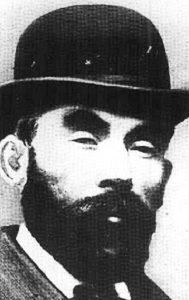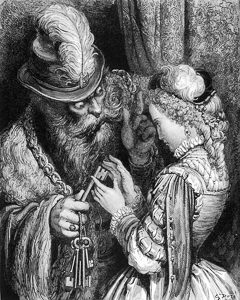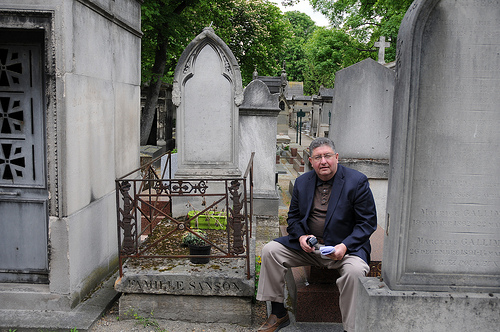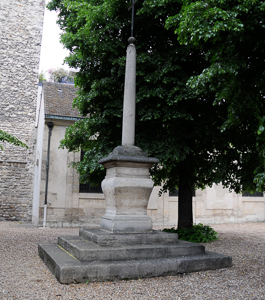I suppose I gave away the ending of this story via the title of the blog. But don’t worry, I think you’ll enjoy the story (unfortunately, the victims and their relatives didn’t).
I previously introduced you to the infamous French serial killer, Dr. Marcel Petiot, in my blog Dr. Jekyll and Mr. Hyde (click here to read). I jokingly refer to him as “Jacques the Ripper.” Today, I’d like you to meet another serial killer who, in the early 20th century, became known as the “French Bluebeard.” Ironically, his beard was red and not blue. Despite different circumstances, he and Dr. Petiot met the same fate.
Did You Know?
Did you know we get the most hits on our blog posts when we use the word “guillotine” in the title?
Let’s Meet Henri Désiré Landru
Henri Désiré Landru (1869−1922) was born in Paris to working class parents. They were so overjoyed they bore a son that they gave him the middle name Désiré which means “much desired.” By all records, Henri’s mother and father provided a loving family atmosphere and did an exceptional job at parenting the boy. Henri was schooled by monks, served as an altar boy, and sang in the church choir. Henri was very intelligent and by the age of sixteen, he was studying mechanical engineering.

At the age of eighteen, Henri began his four-year service in the French army and eventually reached the rank of sergeant. After his discharge are when the problems began. Henri had been raised in relative poverty and he made the decision he would not return to that life style, whatever the cost.
Within two years of leaving the military, Henri had married his cousin and ultimately sired four children. Instead of finding gainful employment, Henri decided to pursue a life of crime and started with petty theft. He landed in jail many times and never showed any remorse for his actions. His father was so distraught over his son’s behavior that he hanged himself believing he had failed as a parent.
The Bluebeard Fairytale
The popular late-17th-century French fairytale of “Bluebeard” tells the story of a very violent but powerful man (with a blue beard because he was of the aristocracy—in other words, a blue blood) who murders his wives for disobeying him. After killing them, he would hang their bodies on hooks in a basement room of his large château. The French folk tale was inspired by the 15th-century Breton serial killer, Gilles de Rais (c. 1405−1440).
His last wife, the youngest daughter of a neighbor, was given a set of keys by Bluebeard with the admonishment that she could go anywhere in the château except for the locked basement room. Then he was off on a trip and left his wife all alone in the château.

After a while, she grew naturally curious about what was inside the locked room. One day, she took the keys, opened the door, and stepped into the room. There she was faced with the hideous remains of her husband’s previous wives. The floor was covered in blood and at one point, she dropped the keys and they became stained red.
When Bluebeard returned, he asked for the keys and became enraged when he saw the blood. He knew she had disobeyed his orders and had entered the room. Bluebeard became violent and threatened to kill her. As he dragged her to meet a similar fate as her predecessors, her brothers showed up in the nick of time and killed Bluebeard. The wife buried Bluebeard’s former wives’ remains and inherited his fortune along with the château. Read More The Parisian Bluebeard is Guillotined


